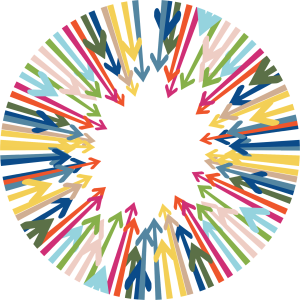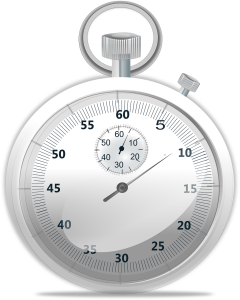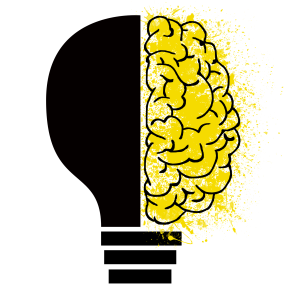Strategies to Improve Your Focus
Focus is the dynamic process of choosing what is critical to notice, do, or recall. Each of us have areas of focus that are easier for us and areas that are more challenging to focus on. This article draws from Dr. Sharon Saline’s work on helping adults with ADHD manage their focus. However, those without ADHD can also struggle with things like prioritization, focus, and task-completion. Understanding the four types of focus can help you step away from the self-criticism that often happens when we have “wasted our time” and to apply strategies to better manage your focus.
1. Selecting – Choosing what to focus on
Selecting which tasks you’re going to prioritize is the first step in approaching and focusing on a task. Selecting involves task-prioritization, which is often a challenge with those who have ADHD. Prioritization requires you to decide what is most urgent (what task is most time-dependent and needs your immediate attention?) and what’s most important (what task will help you move closer to achieving your goals?).
When we have a long list of to-do’s, it can be overwhelming and unclear to select which task we focus on. This is when we are most likely to procrastinate. To work around this, start with a brain dump: write down all of your to-do’s and create a large list of tasks. From there, pick the three tasks that are most urgent and important and write them down on a separate list.
After this, select which of these three tasks are easiest, hardest, or somewhere in the middle, in terms of the amount of effort they require. Break down the harder tasks into two easier parts. When you break things down, they feel more approachable and achievable.
Lastly, think about the way that you like to work. Do you prefer to get easier tasks out of the way and then shift to harder ones? Do you prefer to start with the hardest task and use the feeling of accomplishment from completing that task to then focus on the easier tasks? When you know the order you like to work (e.g. easy, hard, medium), you can use that as your map of how to plan your activities and where to begin.
2. Monitoring – Noticing where your attention is and where it is not
You have to be as intentional about what you are not going to pay attention to as what you are going to pay attention to
 To improve your ability to notice where your attention is going to, write down a list of all the things that typically distract you. These could be things like your phone, noises, social media, someone talking to you, a thought/idea, etc. Which of these distractions are most likely to occur when you are focusing on your selected task?
To improve your ability to notice where your attention is going to, write down a list of all the things that typically distract you. These could be things like your phone, noises, social media, someone talking to you, a thought/idea, etc. Which of these distractions are most likely to occur when you are focusing on your selected task?
When you are doing your selected task, notice when your attention starts to drift away from the task towards a distraction. Instead of criticizing yourself for your brain naturally becoming distracted, bring yourself back to the selected task.
Reducing distractions for a set amount of time can be helpful. Here are some strategies:
- Pomodoro Method: Set a 25-minute timer for focused work, then reward yourself with a 5-minute break or “distraction time”
- Turn on ‘Do Not Disturb’ on your phone and/or turn off ‘Push Notifications’
- Wear noise-cancelling headphones to reduce noise distraction
- Play white/brown noise in the background
- Write your selected task on a sticky note and place it on your computer screen as a reminder of the task you’re working on when you do get distracted
3. Shifting – Moving smoothly from one task to another
Shifting from one task to another can be challenging.

Many of us like to multitask, trying to do multiple things at once. Multitasking can fatigue the brain, because you are not really doing multiple things at once, instead you are shifting your focus between multiple different tasks, which requires energy and effort. Often when we are multitasking, we find that we get a little bit of multiple things done, but do not get any one task done to completion.
Focus on solo-tasking (one task at a time) or dual-tasking (shifting between two tasks), but no more than that at a time. Know what ‘completion’ of your task would look like and use that as your marker for when you are ready to shift to another task. For example, if your selected task is to write an email, completion would be finishing the writing and sending the email off.
Once you complete your task, leave yourself a post-it note of what you are going to do next.
Set a 10-minute timer and take a break following this. Then when your break is done, come back to the next task that you have noted for yourself.
4. Hyperfocusing – Complete absorption into a task and tuning out the world around you
Hyperfocusing often happens with those who have ADHD, especially when a task is interesting, new, urgent, or requires problem solving skills. Hyperfocusing can be a strength, as it helps us stay “zoomed in” on a task and ignore our surroundings (and distractions!). While hyperfocusing can involve long periods of high productivity, it can also lead to things like losing track of time or ignoring bodily needs (e.g. eating, drinking water, going to the bathroom, stretching, etc.).

In contrast to hyperfocusing, when people are in a ‘flow state’, they are concentrating, but they are not so “zoomed into” a task that they’re unaware of their surroundings.
Give yourself an hour to use your strength of hyperfocusing (use a timer). Then follow this with a break, where you intentionally meet your physical and mental needs.
Developing strategies to manage focus takes time, effort, and practice. If you need additional support with this, working with a therapist can help. To learn more about how we can support you with focus, contact Nikki Sedaghat at nikki@balancedmindandwellness.com.
For any questions about our clinic, starting therapy, or understanding how we work, feel free to reach out to us at info@balancedmindandwellness.com or 416-232-2780. We’re here to help!

